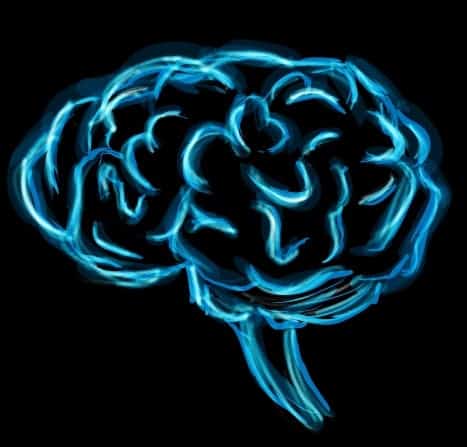Researchers at the Washington University School of Medicine in St. Louis, looking into the effects depression has on the brain have found proof linking the disorder with abnormal brain development in preschoolers. Their study, published in the journal JAMA Psychiatry, shows how gray matter is thinner and lower in volume in the cortex, an area of the brain that plays a key role in processing emotions.
The findings may help explain why children and others who are depressed have difficulty regulating their moods and emotions. The research builds on earlier work by Luby’s group that detailed other differences in the brains of depressed children.

Feeling gray?
Joan L. Luby, Samuel and Mae S. Ludwig Professor of Child Psychiatry, and her team compared the brains of 90 children who had been diagnosed with depression as preschoolers with those of 103 children that didn’t suffer from this disorder. The study involved several clinical evaluations of the children as they aged, including three MRI scans as they grew older; the first scans were performed when the children were 6 to 8 years old and the last at ages 12 to 15. A total of 116 of the subjects received all three brain scans.
“What is noteworthy about these findings is that we are able to see how a life experience — such as an episode of depression — can change the brain’s anatomy,” said first author Joan L. Luby, MD, whose research established that children as young as 3 can experience depression.
“Traditionally, we have thought about the brain as an organ that develops in a predetermined way, but our research is showing that actual experience — including negative moods, exposure to poverty, and a lack of parental support and nurturing — have a material impact on brain growth and development.”
The brain is made up largely of two types of tissue, while and gray matter. White matter predominantly contains axons with some support cells thrown in the mix, and its role is to connect different parts of the brain and transmit information to and fro. In contrast, gray matter is rich in brain cell bodies, and associated with cognition and information processing.
So let’s say that I am a neuron and you reading this, another neuron. Together we make up gray matter and process, share and create information and ideas. White matter would then be the high-speed cables, servers and so on that makes up the Internet and allows you to read what I’m typing.
The proportion of gray and white matter isn’t fixed through time. We know that around puberty, the amount of gray matter begins to decline as communication between neurons gets more efficient and redundant processes are eliminated. But Luby’s team wanted to see how depression influences the brain, and this is why the study was carried out over such a long period.
“Gray matter development follows an inverted U-shaped curve,” Luby said. “As children develop normally, they get more and more gray matter until puberty, but then a process called pruning begins, and unnecessary cells die off.”
“But our study showed a much steeper drop-off, possibly due to pruning, in the kids who had been depressed than in healthy children.”
The cables are there, but there’s no one on-line

Image via eurekalert
The data also shows a correlation between the drop-off in gray matter volume and thickness in the brain and the severity of depression — the more severe the condition, the more loss in volume and thickness was observed. They also had information about the subjects’ families, and when studying the brains of children whose parents suffered from depression — meaning the kids were at higher risk of developing the condition themselves — they didn’t see any abnormalities unless the child had suffered from depression too.
This is how the team determined that depression played a fundamental role in gray matter development. MRI also showed that the differences in gray matter volume and thickness were typically more pronounced that differences seen in other brain structures known to take part in processing emotions.
Luby explains that because gray matter is involved in emotion processing, it is possible some of the structures involved in emotion, such as the amygdala, may function normally but the cortex may be unable to regulate signals coming from it properly.
The team now plan to perform brain scans of even younger children, to see if depression may cause pruning in the brain’s gray matter to begin earlier than normal, changing the course of brain development as a child grows.
“A next important step will involve determining whether early intervention might shift the trajectory of brain development for these kids so that they revert to more typical and healthy development,” said Barch, also the Gregory B. Couch Professor of Psychiatry.
Luby said that is the main challenge facing those who treat kids with depression.
“The experience of early childhood depression is not only uncomfortable for the child during those early years,” she said. “It also appears to have long-lasting effects on brain development and to make that child vulnerable to future problems. If we can intervene, however, the benefits might be just as long-lasting.”






